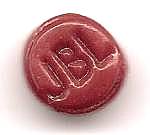
Originally Posted by
jack_bouska

For horns with exponential, or Tractrix flare, the most rapid horn wall curvature changes occur towards the mouth of the horn, with the sides exhibiting less curvature near the throat. This means that waves will only diffract into the full angular coverage, defined by the exit angles of the mouth, for wavelengths which are longer than the axial length of the horn. For shorter wavelengths, the coverage pattern approximately conforms to the angle of the horn walls at the ½ wavelength axial position. For most of the other horn curves in fig 7, the angles range from 8°-12° at an axial distance of 3”, meaning that these horns (exponential, Tractrix, hyperbolic and spherical) will be unable to support a beam width of more than +/- 10° at 9kHz and above.





 Reply With Quote
Reply With Quote




 ( One can actually buy a .56mH coil . )
( One can actually buy a .56mH coil . )



